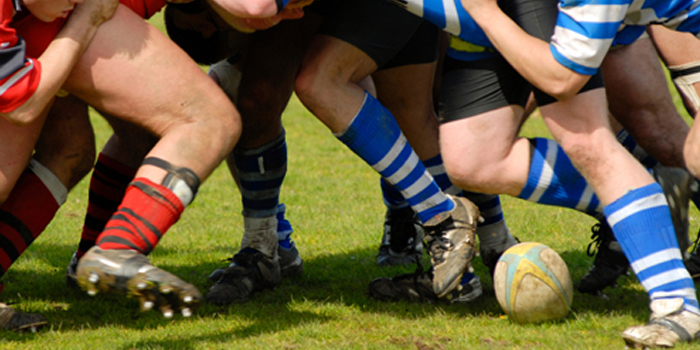
After having written a few articles on specific conditioning programs for a number of positions in rugby, I'll conclude this elongated series with the collective unit of players referred to as the inside backs. The inside backs start with the number 9 position and are sometimes referred to as half-backs or half-forwards among some pundits in the northern hemisphere. I think the determination of what the position is called goes a long way to describe either the type of body playing the position or where a coach sees the player in reference to the two main playing units of forwards and backs.
Most international half-backs are over 90 kg. They need to be in order to withstand the physicality of the position and act as an extra loose forward at times both in carrying the ball and also defending around the edges of the ruck/maul and scrum. There are also several number 9 positions who are considerably smaller in stature and tend to play a much different role, sniping around the fringes and linking forwards with the back line.
The number 10 is the field general, the quarterback if you like. He's a play maker and director with the ability to take on the line running and minimize collision with footwork and agility. He kicks both offensively and defensively and has passing skills to put those players around him into space.
Finally in this triumvirate is the number 12. Again, depending on where you are from, he has been termed a second 5/8 or an inside center. To me, he is the flanker of the back line with the physicality to dominate at the collision but also the skills to free his arms to offload and support runners and set the outside backs in motion.
All three positions need varying levels of speed, with number 10 and 12 needing a similar distribution of acceleration/power, lateral speed/agility and maximal speed. Number 9 is more acceleration and agility rather than maximal velocity. The percentages that I usually consider for these positions are listed below. These then guide the amount of time that I spend on each attribute in a training plan for the respective positions. I also individualize the plan to meet the needs of the specific player as a result of testing and discussion.
This is a primer for a speed circuit that my late friend and assistant Luke Thornley introduced into our training for the inside backs:
Repeat circuit 1–3 times with 60 seconds between exercises and 2–3 minutes between circuits.
- Max standing long jump
- 10-meter sprint off chest (or short bungee)
- Max standing triple broad jump with 20-meter sprint out
- Resisted harness release for 10–20 meters
- 10-meter sprint/20-meter power skip/20-meter sprint
- Parachute release (22 meters resisted/30 meters)
Following this circuit, the individual groups would do the following based on the percentage of the three main areas of specific speed development as listed above. The time on each is based on the percentage time available.
Lateral speed, footwork and agility: I like to use conditioning and small sided games on a reduced playing field size to emphasize agility because it's game related. I don't like activities where the player is told to go to a cone and change direction, although, of course, it does have its place in a training program. I believe that it's far less real. I very much like the pattern drills that receivers do in American football. If there is a more specific speed session for team sports players, I have yet to see it. Having had the honor of calling out patterns for a player many years ago on a visit to a professional team in the United States, I can assure you that it's very demanding and highly specific.
Although many strength and conditioning coaches dismiss ladder drills, I feel that they have a role to play in coordinating movement patterns. I think that they're an extremely good warm-up activity for most sessions with a focus on change of direction. The four main drills that I use most in a preset agility drill are the pro agility (5-10–5), the Illinois agility, the Nebraska agility and the Colgate agility.
RELATED: Power Training for Team Sports
Maximal velocity: For maximal velocity, I like to use one-on-one sprint races over a variety of distances. I have a speed ranking board that I've used from program to program. On this board, I list the speed times for each of the players over set distances in order of fastest to slowest. Any man below can challenge any man above to a race over the set distance. If the lower man wins, his name is replaced by the winner and the other man drops back to the other place on the leader board. It certainly builds a high degree of competitiveness and intensity into the session.
Flying sprints are another movement that I use a lot. With these, a player builds up pace for a certain distance and then sprints maximally for a given distance. For example, a flying 30-meter sprint usually starts with a 22-meter build up and then a maximal sprint for 30 meters.
I will use some overspeed training with a slight downhill run, a strong tailwind or elastic cords (bungees), but I'm very wary of the athlete over striding. There are potential injury concerns, so these are usually limited in the program.
Acceleration: Typical programming options include the speed/power combination that I've described extensively in these columns. All resisted methods of training including parachutes, sleds, Prowlers and harnesses can be utilized in these sessions over distances up to 30 meters. Also, short sprints/starts from different starting positions up to 20 meters will be used as well.
I will utilize a contrast method of peak power exercises such as the hang clean, power snatch, jump squat, trap bar power shrug or similar movement often allied with the velocity-based training ideas of Bryan Mann using a Tendo unit. I'll also use a plyometric movement contrasted with sled drag sprints.
Programming
After chatting with Joe Kenn about his tier strength training system, I applied his concepts to speed training. I looked at four categories: acceleration power (AP), footwork agility (FA), maximal velocity (MV) and plyometrics (P) and developed the training program below as an example of how you can apply the ideas. Of course, how you structure the program will be dictated by the needs of each player, but this provides a working example for you.
Option 1
- Warm up for 15 minutes with a range of movement drills and gradually increase in speed until you're at around 85% of top speed and are ready to go. Say high knees, carioca and marching drills—you know what to do.
- Plyometrics: Do single hurdle jumps and sprint 22 meters. Walk back for recovery. Increase the height with each rep if you can for 5 rounds of 5 X 22 meters. Then do a 28-meter sprint. Repeat long jumps for 22 meters and then sprint out X 5.
- Resisted (Parachute or Sled): Sprint with resistance for 30 meters and then release and sprint for 30 meters without any resistance.
- Assisted work with bungees: Have a partner stretch out the cord. He has a football and you sprint out with the assistance of the cord and receive a pass on an arc line to his left or right. Vary it each time and do 4 on each side.
- Crossovers: Sprint out straight for 22 meters. Plant your right foot hard and cut diagonally for 10 meters. Then straighten off your left foot and sprint out for 22 meters. Repeat going the other way and do 4 on each side.
- In and Outs: Sprint hard for 20 meters and ease back for 10 meters. Sprint hard for 20 meters and then ease out for 10 meters. Repeat 5 times.
Option 2
- Perform a good warm up. Mix the drills up as above.
- Flying 30s: Build up over 22 meters and then hit top pace and hold through to the halfway line. Walk through to the other end and repeat 4 times.
- One versus one: Turn them inside out from behind and race in 15 meters X 50 meters or the area of the field. One player starts about 5 meters in front of his partner (he has the ball) facing the same way. The player behind attempts to turn the defender (front man) both ways and then, when he sees a gap, sprints past him and races to the 50-meter line.
Aerobic Training
The other most important aspect of the physical development of inside backs is aerobic. The GPS data shows that a half-back covers, on average, over 7,500 meters in a game at a variety of intensities. Most of this training is in the off-season to develop a fitness base for higher intensity training during the season, but it's topped off during each week of the playing season with a short repeated speed session such as 10 X 50 meters every 30 seconds and then 20 X 25 meters lying flat on the ground at the start and going every 15 seconds. In addition, conditioning games with modified rules are used to stimulate further improvements in fitness. The added bonus with using games is that you can develop ball skills and vision concurrently. Some methods employed in the off-season are fartlek running, which intersperses higher intensities of running with jogging over a varied terrain usually for 40–60 minutes a session, and a variety of down and up drills with running and VO2 max running grids.
Cross training on bikes and the use of rowing machines are also very useful so as not to overload the legs but still work the heart and lungs appropriately. I've gone into greater detail with aerobic training in a previous article, but here is a listing of extras that I've done as an in-season workout.
Extra Fitness Running
- Monday, 20 minutes extra ball games
- Tuesday, 10 minutes
- Thursday, 10 minutes non-game members only
- Tuesday and Thursday, 10-minute sessions
Option 1
AB Shuttle: Sprint 3 X 22 meters (complete in 15 seconds or less) and then jog 78 meters (in 30 seconds or less). Each block (3 X 22 meters + 78 meters) will take you 45 seconds. If you arrive at the other line before 45 seconds, rest until 45 seconds is complete and then start the sprints again. Repeat for six consecutive blocks (864 meters in 4 minutes, 30 seconds).
Rest 2 minutes and then do 10 X 40 meters every 20 seconds (400 meters in 3 minutes, 20 seconds).
Session total distance: 1,264 meters
Option 2
Out and Backs: Complete a 4 X 22-meter shuttle in 20 seconds. Rest 20 seconds and then do 6 reps (528 meters in 3 minutes, 20 seconds).
Rest 1 minute, 30 seconds and then perform a VO2 grid. Complete 50 meters X 17 meters every 10 seconds for 5 minutes (750 meters fast running, 251 meters slow running in 5 minutes).
Session total distance: 1,278 meters fast (251 meters recovery paced running)
Option 3
Rugby Suicide: Start on halfway line, sprint 10 meters, run backward 10 meters, sprint 28 meters, run backward 18 meters, sprint 40 meters and turn and jog 50 meters. The shuttle should take less than 45 seconds. Fast jog back to halfway in 15 seconds and then rest for 30 seconds. Repeat 6 times (924 meters: 9 minutes).
Session total distance: 924 meters
Option 4
NRL Shuttle Run: Complete 20 meters out and back, 40 meters out and back and 60 meters out and back for 5 rounds (1,200 meters in 5–6 minutes).
Rest 2 minutes and then performs a Malcolm drill for 1 set. Then after finishing in the down position, get up and sprint to the try line in less than 3 minutes (240 meters, half backpedal and half forward running).
Session total distance: 1,440 meters
Option 5
Perform the following:
- Malcolm + coat hanger + half gasser X 2
- Malcolm in less than 2:30, rest 1:15 (240 meters)
- Coat hanger in less than 1:00, rest 30 seconds (241 meters)
- Half gasser in less than 30 seconds, rest 30 seconds (140 meters)
Session total distance: 1,242 meters
Option 6
Springbok Shuttle: Complete 30 seconds of work and 30 seconds of rest: 0 – 5 – 0 – 10 – 0 – 15 – 0 - 20 – 0 – 25 – 0. Complete as many as possible in 30 seconds and then rest for 30 seconds. do this for 4 minutes (450–600 meters in 4 minutes).
Rest 2 minutes and then perform out and backs. Go from the goal line to 70 meters and back in less than 30 seconds. Rest 30 seconds and complete 4 rounds (560 meters in 4 minutes).
Session total distance: 1,010–1,160 meters
Option 7
Tietjens Shuttle: Complete a 80-60-40 drill in less than 45 seconds. Take 30 seconds rest and do for 8 rounds. Start on the goal line, sprint to the far 22-meter line, touch the line with your foot, sprint back to the 22-meter line, touch the line with your foot, sprint to the far 10-meter line and walk through to the goal line (1,376 meters in 10 minutes).
Session total distance: 1,376 meters
Option 8
Out and Backs: Complete 4 X 50 meters in less than 45 seconds. Rest 45 seconds and do 6 sets (1,200 meters in 9 minutes).
Session total distance: 1,200 meters
Option 9
Nicks Anaerobic Drill: Perform 45 seconds work, 3 minutes and 15 seconds rest (starting on a rolling 4-minute clock): 0 – 5 – 0 – 10 – 0 – 15 – 0 - 20 – 0 – 25 – 0. Complete as many as possible in 45 seconds with a down and up at start and all turning points for 3–6 total reps.
Weight Training
The weight training program will be individualized and needs based following an assessment, but on average, it will need to maintain upper body size and strength. Also, consider full body strength and power program. An example for the upper body is as follows:
- Primary Push and Pull: Bench press supersetted with weighted chin-ups
- Week 1: 6, 5, 4, 4
- Week 2: 5, 4, 3, 3
- Week 3: 4, 3, 2, 2
- Secondary Push and Pull: Incline hammer press supersetted with hammer strength low row
- Week 1: 12, 10, 8, 8
- Week 2: 10, 8, 6, 6
- Week 3: 8, 6, 4, 4
In order to produce explosive running efforts of a short acceleration nature, lower body strength and power are also extremely important. GPS data from games show us that a half-back will perform in excess of 30 sprints in a game at a pace above 7.5 meters per second and a distance of approximately 15–30 meters each. Heavy power training is one method for achieving this in the weight room. Attempted acceleration of the bar is initiated to switch on a large number of the fast twitch muscle fibers. You can perform:
- Power Cleans from Blocks, 5 X 3 reps at 70–80% of max supersetted with knees to feet jumps, 6 reps on each
- Band Box Squats, 5 X3 reps at 60% of max supersetted with box jump-ups, 6 reps per set
- Push Presses, 5 X 3 reps at 70–80% of max supersetted with medicine ball throws against a wall
Make sure you're utilizing the speed/power combination and the sessions mentioned above in the speed training section, using contrasts of peak velocity movements and 10-meter acceleration sprints.
Strength training specifically for the lower body is programmed using the following template:
- 1 X peak force lower body (select one from the following: back squat, front squat, box squat, deadlift, trap bar deadlift)
- 1 X single leg movement (select from: a variety of step-ups, sprinter’s squats, Bosch squats, lunge options)
- 1 X hamstring/glute/lower back movement (select from: Romanian deadlift options, reverse hypers, glute ham raises, hip thrusts)
We utilize a range of set and rep patterns specific to the athletes' needs, but I have a tendency to favor wave loading protocols, ratchet loading, clusters and straight sets done pyramid style. Some of my favorites are listed below:
- 6 sets loading cycle (wave loading)
- Week 1: 2 X (6/5/4)
- Week 2: 2 X (5/4/3)
- Week 3: 2 X (4/3/2)
- 5 sets loading cycle (strength)
- Week 1: 5 X 5
- Week 2: 2 X 5, 3 X 3
- Week 3: 5/4/3/2/1
- 4 sets loading cycle (clusters)
- Week 1: 4 X 3/3 with 20 seconds rest
- Week 2: 4 X 2/2/2 with 20 seconds rest
- Week 3: 4 X 3/2/1 with 20 seconds rest
- 3 sets loading cycle (strength)
- Week 1: 3 X 5
- Week 2: 3 X 3
- Week 3: 5/3/1
Hopefully, I've been able to give you an outline of the type of training for this positional group. You can put some of these ideas into action with your own players. Here are some examples of physical week plans actually used during the season:
Half-Back Physical Training Week Plans
Selected in starting 15
Selected 16–23
Not selected to play
First and Second 5/8 (number 10 and 12) Physical Training Week Plans
Selected in starting 15
Selected 16–22
Not selected to play











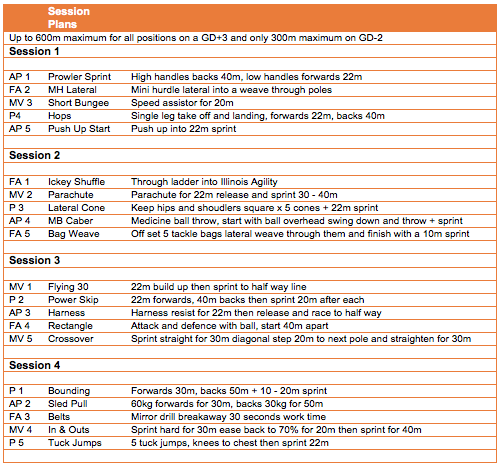
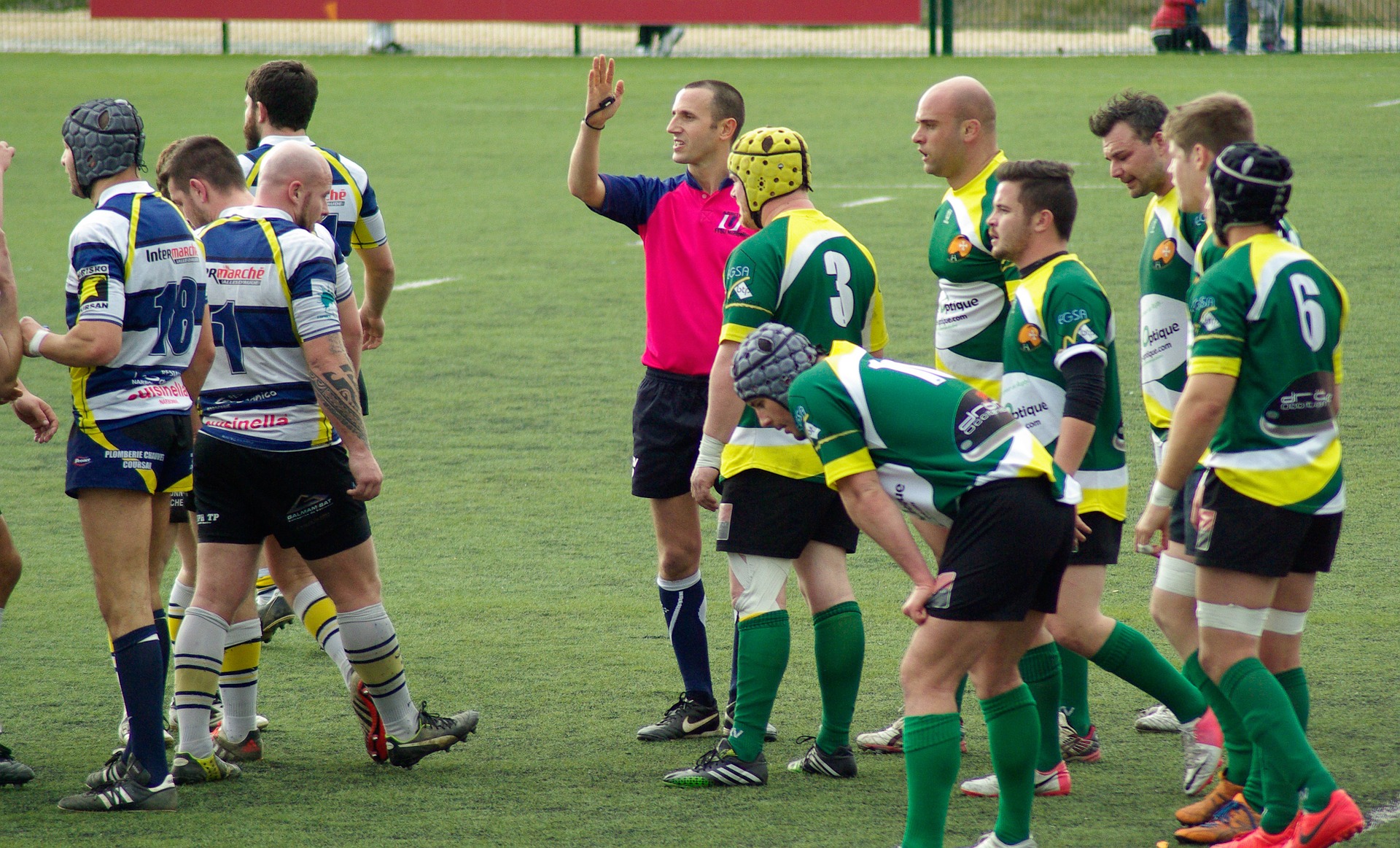
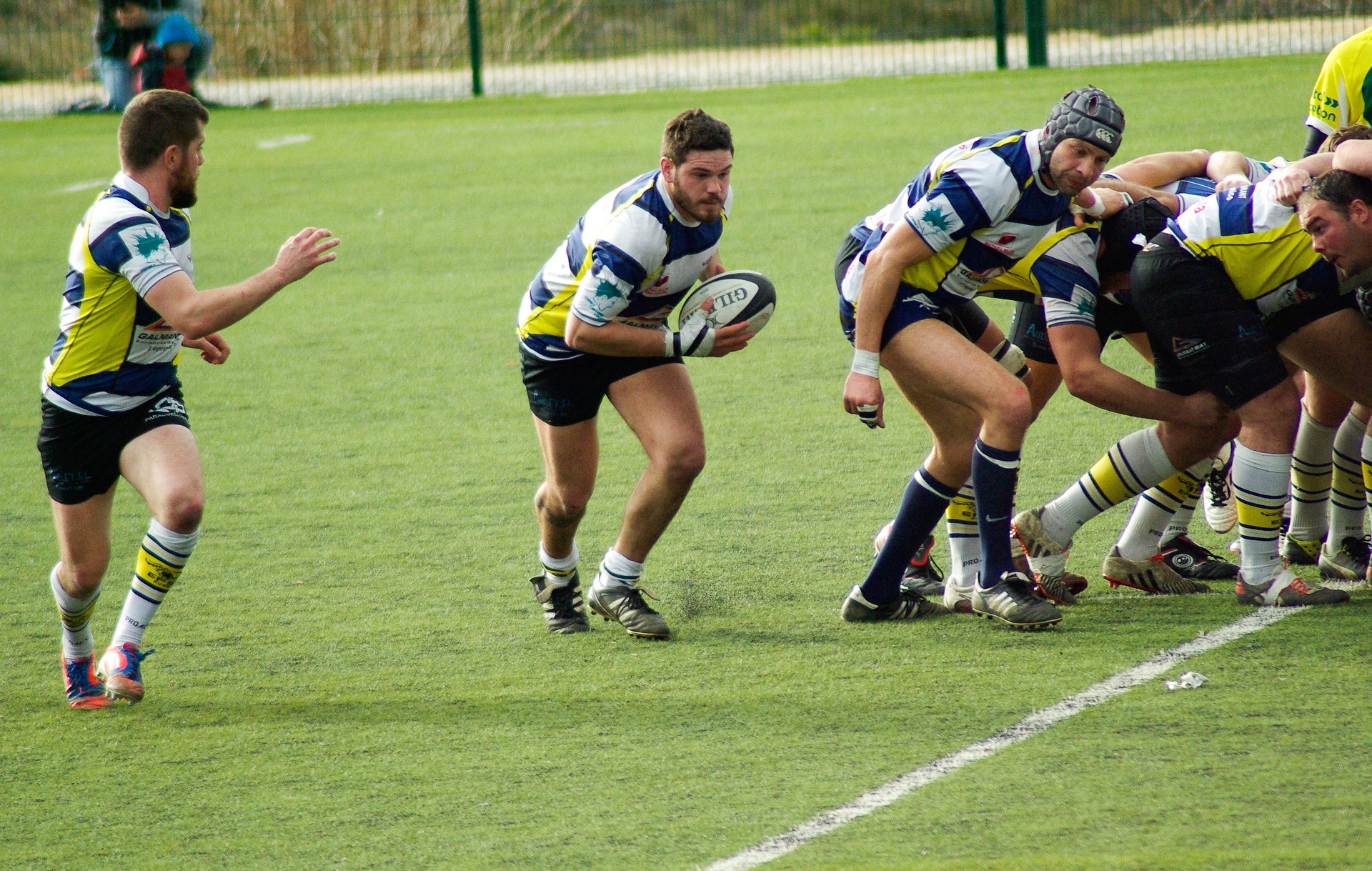

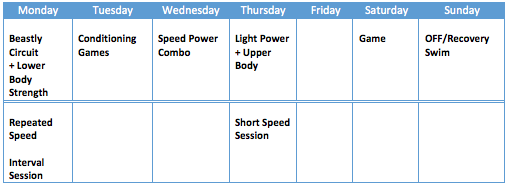
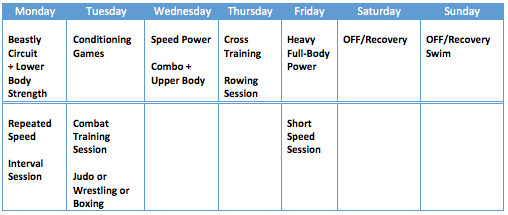




I find your approach to training and coaching pretty interesting and quite refreshing.
Just wondering if you do any programming etc on a personal basis?
Kind Regards,
Jonathon
Would you recommend me to do the beastly circuit as a part of my conditioing after a upper body session??? To improve the fitnees and drop body fat????
My second question :
In the wave loading the first week is a total of 30 reps 85+ %.
This strength session or loading is still good for a scrum half??
I dont wanna get big doing too much strength.
Thanks ashley.
Example of my body session:
3x3 80% Squat (120kg)
6 CMJ Between sets
3x3 80% RDL (110 kg)
4x3 Power cleans (75-80% RM max)
4 long jumps between sets
Ketbells swings 4x4
---------------------------------------------
Then i finish with aerobic maybe 30-25 min 60-70% MHRT
Prehab